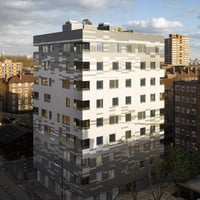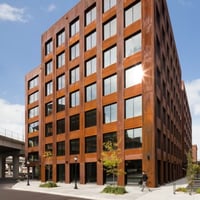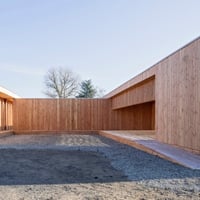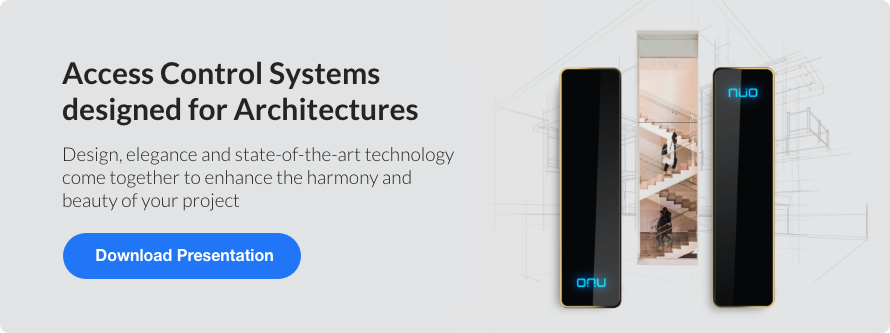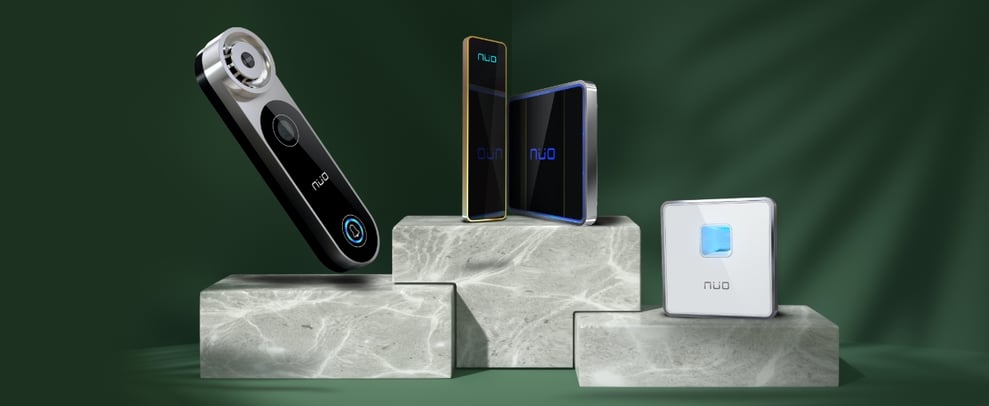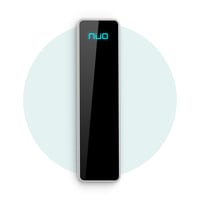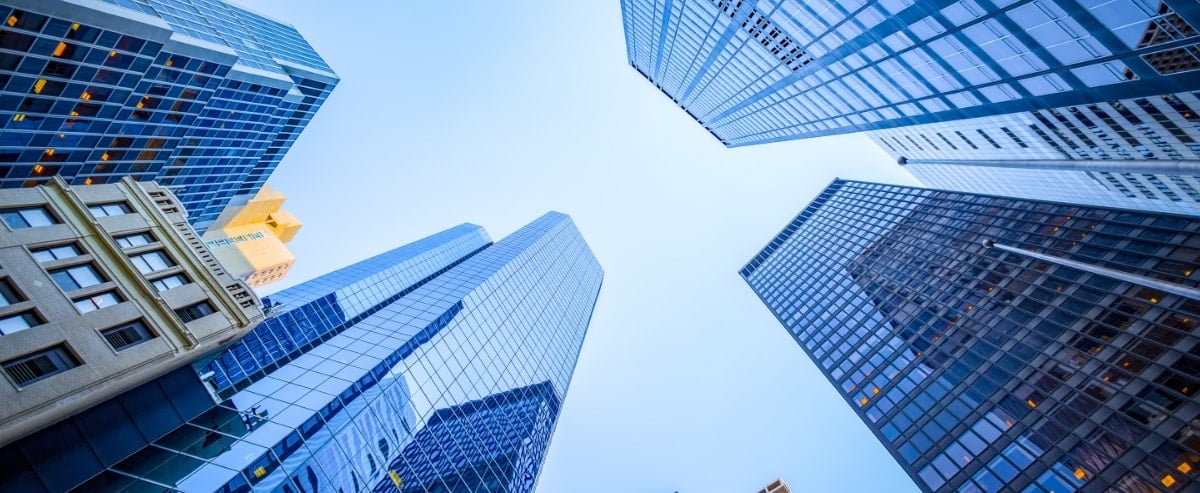There are already many companies that have turned to the construction of wooden buildings with a view to making them lighter and 100% sustainable. In other articles we have seen how, little by little, sustainable architecture is becoming the central focus of architecture and construction projects, thus adapting even more to the growing concern for environmental protection among governments and society alike.
Thus, to eliminate the production of carbon dioxide in the construction of buildings, the structure, partitions, framing, stairs, etc. are made completely out of wood, especially cross-laminated wood, a material five times lighter than concrete and that reduces the weight of the foundation, even though the facade in some cases is made of brick.
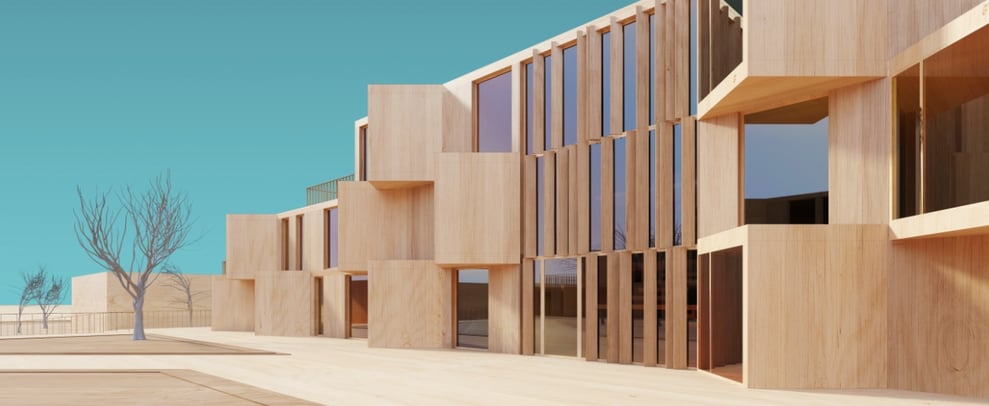
Reasons for using wood in construction
Energy savings
Wooden buildings lead to considerable energy savings of 75% in both heating and cooling. This is because, when this type of construction is carried out, aspects such as the direction the building faces are taken into account, so that solar radiation and wind can be used in their favour. Furthermore, it is of the utmost importance to ensure the interior is fully integrated with the exterior in order to take advantage of both spaces in winter and summer.
The perfect insulator
Wood can be 15 times better as a thermal insulator than a concrete wall. In addition, wood is capable of absorbing and releasing moisture into the environment, or purifying it and making it healthier.
Faster construction times
Building with cross-laminated wood is much faster than with other materials such as concrete or steel. It is lightweight and can be built using panels, reducing construction times considerably. For example, a home can easily be ready to live in within 100 days.
Construction costs
Despite the fact that the initial construction cost to be invested is usually slightly higher than with the use of other materials, this cost is easier to recover in the short term thanks to the energy savings it results in.
Examples of existing wooden buildings in the world
Waught Thisleton Sturdio
In London, this architecture studio built one of the tallest buildings (33.8 metres) made with cross-laminated wood, although its facade is made of brick.
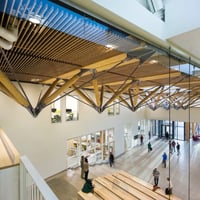
Leers Weinzapfel Associates
They were commissioned to design and build the School of Design at Amherst College in Massachusetts. This building, completely made of wood, was an idea that was meant to spark a debate among the school's students and raise awareness about the importance of sustainable construction.
Architect Michael Green
This architect built a 30-metre-high building in Canada that served as an example for other constructions, preventing the emission of 400 tons of carbon dioxide by not using steel or concrete.
Kaiserslautern University
Students from the German Kaiserslautern University were commissioned to design and build a community centre for refugees. The project had to be built in just three months, so they opted for cross-laminated wood. Furthermore, the same refugees were able to help build it, thus learning the trade of wood construction.
Technology: How is it integrated into wooden buildings to ensure their sustainability?
Technology is currently a key factor in any building, especially with regard to security solutions and access control systems. Controlling a building's capacity, as well as the people who enter and exit it, has become of the utmost importance as mobility increases, to guarantee the safety of the building as well as the people coming in and out of it.
However, it is essential for these systems to also be sustainable. To achieve this, the materials they are made with are of vital importance.
Most access control systems on the market are made of plastic, a material that doesn't exactly meet sustainability standards and that has a serious impact on the environment. For this reason, it is important to go with solutions that do in fact comply with these standards, such as the NÜO solutions.
En NÜO Planet, nos consideramos una empresa verde, puesto que todos nuestros sistemas de control de accesos están hechos con materiales 100% reciclables como el aluminio y el cristal templado, a la par que resistentes y duraderos. Nuestra apuesta es reducir al máximo el uso de plásticos. Si quieres saber cómo se integran de forma 100% natural los dispositivos NÜO en los proyectos de arquitectura, no te pierdas este artículo.
Discover some of the NÜO readers
 |
NÜO GolfNÜO Golf is a reader for your access control system, ideal for any type of surface, including wood. Its simplicity and minimalism help it adapt perfectly to the project's design. |
|
|
NÜO PoloNÜO Polo is a proximity reader that fits perfectly into door profiles thanks to its narrow and distinguished design. It is ideal for using indoors and, as well as working with high security cards, it is perfect for using with a smartphone as a card thanks to the NÜO Card mobile credential. It can be customised to your liking, allowing it to be adapted to the surface on which it is to be installed and, thanks to its extra-flat front design that only sticks out 8 mm out from the wall, it integrates onto the surface in a completely natural way. The front is made of glass and you can choose between black or white, while the aluminium profile is available in gold, silver and black.
|

|
NÜO Lu WNÜO Lu W is a high-end biometric reader prepared to manage hundreds of users in an agile way and with maximum security. Its aluminium housing with luxury finishes in gold, silver and black will embellish the design of your project. |

|
NÜO AirNÜO Air is specially designed to work outdoors with a IP67 and IK8 degree of protection and under extreme weather conditions, withstanding temperatures ranging from -25ºC to above 50ºC. The finish is resistant to abrasion, impacts, sunlight, rain and saline environments. Ideal for adapting to any surface: brick, wood, granite, etc. |
Discover all our readers by clicking on the following link.
Committing to the design and construction of sustainable buildings will be key to the growth of architecture and construction firms, thus guaranteeing their future. Furthermore, committing to what we call "green technology" will be key to making these buildings 100% sustainable and efficient.
Escrito por: NÜO Planet
Categorías: Security, Design, Technology, Access Control, Architectures





